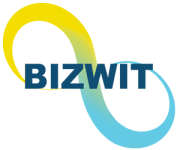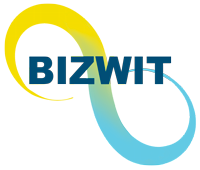Global Clostridium Diagnostics Market is valued at approximately USD 838.05 million in 2022 and is anticipated to grow with a healthy growth rate of more than 7.10% over the forecast period 2023-2030. Clostridium is a gram-positive bacterium and is present in multiple species. The gastrointestinal disorder Clostridium Difficile Infection (CDI), which is brought on by this bacterium, also leads to diarrhoea brought on by antibiotics. The diagnosis of this illness is made using a variety of imaging methods, including radiography, CT, and endoscopy. Globally, the population is ageing significantly, and it is anticipated that the prevalence of clostridium-related illnesses would boost market revenue. Future lifestyle changes, continuous healthcare infrastructure development, and technology advancements such as artificial intelligence and automation are other factors that are projected to contribute to market expansion. Robotics and automation are being used in clinical laboratories excessively, which benefits patients by enabling lab staff to deliver findings more swiftly and accurately. Transport, categorization, accessory, and inspection of samples might all be automated with the help of modern diagnostic technology. For more than 10 years, laboratories’ reliance on automation to maintain profitability has increased demand for better clostridium testing.
The rise in clostridium difficile infection (CDI) is poised to stimulate the need for diagnostic solutions, thereby fueling the growth of the global clostridium difficile diagnostics market. Notably, Cures, an open-access medical journal, reported in December 2021 that C. difficile infection affects 13 individuals per 1,000 worldwide, with approximately 75% of cases linked to hospitalization. This data underscores the escalating demand for diagnostics in response to the increasing prevalence of CDI. Healthcare-Associated CDI (HA-CDI) rates have been related to higher rates of hospital admissions and antibiotic use. Increased morbidity and death have been associated with nosocomial CDI. Additionally, the development of cutting-edge diagnostic tools and rising public awareness of presymptomatic blood screening for infectious disorders expected to provide lucrative market growth opportunities over the forecast period. However, the high cost of Clostridium Diagnostics stifles market growth throughout the forecast period of 2023-2030.
The key regions considered for the Global Clostridium Diagnostics Market study includes Asia Pacific, North America, Europe, Latin America, and Middle East & Africa. North America dominated the market due to the nation’s widespread usage of antibiotics. Over the forecasted duration, the market is expected to experience growth driven by the escalating incidence of clostridium-related disorders in the region. The expansion of the American market can be attributed to heightened public awareness, thanks to concerted launch initiatives by various organizations. Notably, the “See C. diff” campaign launched by the Peggy Lillis Foundation in December 2020 successfully reached over 250,000 Americans, contributing to the market’s upward trajectory. Asia Pacific is expected to grow significantly over the forecast period, Because of rising healthcare expenses and clostridium prevalence, the growing economies in the Asia Pacific region, had lucrative growth over the forecast period. The Japanese market is experiencing growth due to the implementation of impactful measures. Notably, in March 2022, Japan established a new institution with a budget of USD 1.6 million dedicated to supporting vaccine and pharmaceutical initiatives. This initiative is part of a broader strategy to address infectious diseases. The institution, known as SCARDA, will play a pivotal role in managing funds for research and development (R&D) projects and establishing a flagship R&D site for collaborative endeavors. These strategic components are expected to create multiple opportunities for expansion in the Japanese market throughout the projected period
Major market player included in this report are:
F. Hoffmann-La Roche AG
Thermo Fisher Scientific Inc.
Merck & Co. Inc.
Pfizer, Inc.
Actelion Pharmaceuticals U.S, Inc.
Abbott Laboratories
Trinity Biotech Plc.
Summit Therapeutics Inc.
Sanofi S.A.
Novartis AG
Recent Developments in the Market:
Ø In November 2021, An innovative vaccination developed by Huvepharma Canada Corporation Inc. has been found to protect against Necrotic Enteritis (NE) caused by Clostridium perfringens Type A in grill chickens. The RASV platform uses cutting-edge enabling recombinant technology to change salmonella such that it might act as a vector to help prevent NE while maintaining user, animal, and environmental safety.
Ø In August 2021, Gold Standard Diagnostics Europe was created through a partnership between the two German businesses, Novatec Immundiagnostica GmbH and Virotech Diagnostics GmbH. The newly established firm is producing diagnostic kits for infectious illnesses (bacterial, viral, and parasite disorders), hormones, and autoimmune, with a focus on both the human and animal industries.
Global Clostridium Diagnostics Market Report Scope:
ü Historical Data – 2020 – 2021
ü Base Year for Estimation – 2022
ü Forecast period – 2023-2030
ü Report Coverage – Revenue forecast, Company Ranking, Competitive Landscape, Growth factors, and Trends
ü Segments Covered – Diagnostic Test, End User, Region
ü Regional Scope – North America; Europe; Asia Pacific; Latin America; Middle East & Africa
ü Customization Scope – Free report customization (equivalent up to 8 analyst’s working hours) with purchase. Addition or alteration to country, regional & segment scope*
The objective of the study is to define market sizes of different segments & countries in recent years and to forecast the values to the coming years. The report is designed to incorporate both qualitative and quantitative aspects of the industry within countries involved in the study.
The report also caters detailed information about the crucial aspects such as driving factors & challenges which will define the future growth of the market. Additionally, it also incorporates potential opportunities in micro markets for stakeholders to invest along with the detailed analysis of competitive landscape and product offerings of key players. The detailed segments and sub-segment of the market are explained below:
By Diagnostic Test:
Enzyme Immunoassays
Realtime Polymerase Chain Reaction (RT-PCR)
Nucleic Amplification Tests (NAAT)
Stool Test
Blood Test
Others
By End User:
Hospitals
Diagnostic Centers
Specialty Clinics
Others
By Region:
North America
U.S.
Canada
Europe
UK
Germany
France
Spain
Italy
ROE
Asia Pacific
China
India
Japan
Australia
South Korea
RoAPAC
Latin America
Brazil
Mexico
Middle East & Africa
Saudi Arabia
South Africa
Rest of Middle East & Africa




